As New York City begins to reopen and prepares for Phase 2, several changes are in place. More than 40 miles of city streets have been closed to car traffic to allow more room for pedestrians to practice social distancing, not to mention for outdoor dining. Non-essential retail has resumed, albeit for pickup and curbside orders only. As per Governor Cuomo's executive order, businesses may refuse entry to anyone not wearing a mask or face covering. However, one thing that has not changed is that many New Yorkers still live in high-rise, high-density buildings.
Early in the crisis, New York City's high population density contributed to fears of the virus's spread. As a result, hundreds of thousands of residents left as the pandemic and ensuing stay-at-home orders hit. But as time passed, studies emerged to find that New York's highest infection rates were in "suburban-like" areas such as Staten Island and the farthest reaches of Brooklyn and Queens; Manhattan, by contrast, had the lowest infection rate. Moreover, factors like the wealth gap, overcrowded households, unaffordable housing prices, and policies that deter people from taking sick days or seeking medical attention emerged as likelier culprits for the contagion.
In this article:
Nevertheless, the idea of waiting out the pandemic in crowded buildings with faulty plumbing, poorly circulated air, several high-touch surfaces, and little room to engage in proper social distancing practices was not one that many found reassuring. But fortunately, there are things high-rise dwellers can do to lower their risks, and ways of designing future buildings to guard against future pandemics.
Faulty Plumbing
In the aftermath of the 2003 SARS (severe acute respiratory syndrome) epidemic,
Emerging Infectious Disease
published a study exploring the community outbreak of SARS at the Amoy Gardens—a high-rise residential complex in Hong Kong where 329 residents, all living in the same block, came down with SARS and 42 died. The authors of the study found a notably higher viral load in patients residing in adjacent units of the same block inhabited by patient zero. They also found lower viral loads detected in patients living further away from patient zero. The study suggests that at least in the case of SARS, living next door to or even on the same floor as an infected individual increased one’s chances of contracting the virus and one’s chances of carrying a higher viral load.
Other studies on the SARS outbreak at Amoy Gardens have reached similar conclusions, and one 2006 study published in the
Journal of Environmental Health
even offered a possible explanation for the rapid transmission of SARS at Amoy Gardens. The researchers concluded that the virus likely traveled from unit-to-unit via faulty bathroom floor drains. In February 2020, a similar explanation was initially proposed as an explanation when
a cluster of COVID-19 appeared in a Hong Kong high-rise
, though faulty plumbing was later ruled out as a culprit in that case.
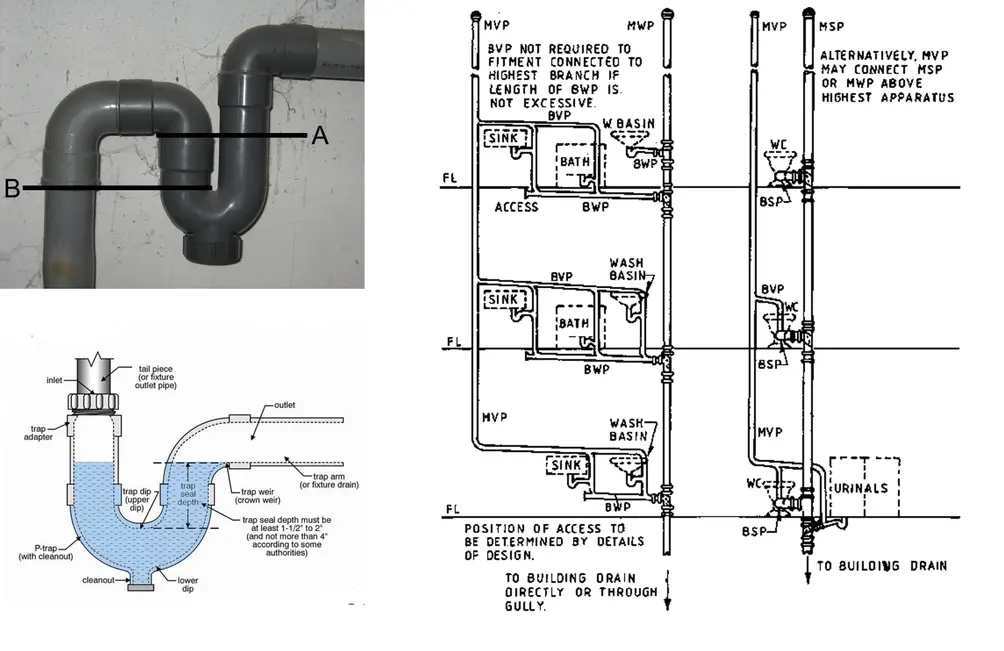 Plumbing trap and two-pipe highrise plumbing system
Plumbing trap and two-pipe highrise plumbing system
So, could faulty plumbing potentially spread a virus from apartment to apartment in the United States? It is generally assumed that the only way for a virus to spread from apartment to apartment via pipes is if there is no water in the U-shaped pipe traps (also known as U-traps) that connect floor drains. If devoid of water, U-traps could permit droplets containing viruses to travel through the pipes of a building. Fortunately, this is highly unlikely to happen in any New York City high-rise building since North American plumbing is designed to ensure the U-trap is never empty. But even if faulty plumbing isn’t a likely problem for New Yorkers, high-rise living may still place one at higher risk during a pandemic.
Recirculated and Poorly Filtered Air
Recirculated and inadequately filtrated air is a common culprit in the spread of diseases. However, as Joseph Allen, director of the Healthy Buildings program at the Harvard T.H. Chan School of Public Health, recently observed in
The New York Times, the real problem isn’t air in high-density buildings but rather how this air is managed. As Dr. Allen notes, “Buildings typically recirculate some air, which has been shown to lead to a higher risk of infection during outbreaks.” However, he also suggests that there are many things building managers and even tenants can do to mitigate the potential problems posed by recirculated air. Most buildings use low-grade filters that only capture about 20 percent of viral particles. Using a filter with a MERV rating of 13 or higher can help capture up to 80 percent of viral particles. Portable air purifiers can also help. Raising humidity levels is another strategy since, as Dr. Allen notes, viruses survive better in low humidity.
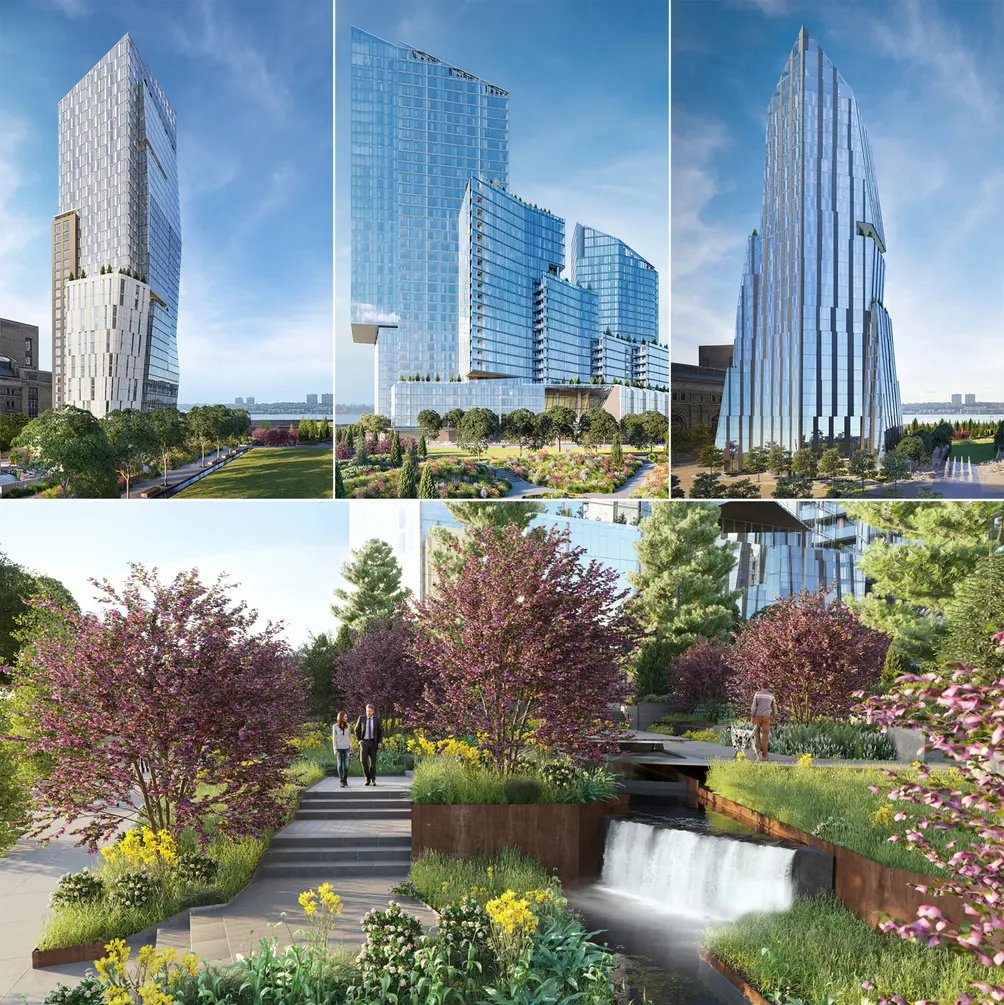 Waterline Square via Noe & Associates with The Boundary
Waterline Square via Noe & Associates with The Boundary
Waterline Square, a luxury three-tower development on the Upper West Side, is underscored by air and water purification systems in place long before the first case of COVID-19 was reported. State-of-the-art MERV-13 and MERV-14 multi-filter systems throughout the development filter fresh air into each home and public spaces. These top-of-the-line filters are specifically designed to prevent air recirculation and air migration, thus ensuring that residents receive the freshest air at all times.
Further downtown, Rockefeller Group's NoMad condominium, Rose Hill, has MERV-13 filters in the common and amenity areas for premium and fresh air ventilation. The building also features windows that can open to allow fresh air into the 123 residential units. Indeed, no matter where one lives, the most effective way to deal with potentially bad air, however, is simple—open the windows and keep them open at least a crack at all times to let air recirculate.
Further downtown, Rockefeller Group's NoMad condominium, Rose Hill, has MERV-13 filters in the common and amenity areas for premium and fresh air ventilation. The building also features windows that can open to allow fresh air into the 123 residential units. Indeed, no matter where one lives, the most effective way to deal with potentially bad air, however, is simple—open the windows and keep them open at least a crack at all times to let air recirculate.
High-touch Surfaces
The most likely source of viral spread in any high-rise building is via high-touch surfaces. In this case, the evidence is indisputable. As per
CDC guidelines, to avoid COVID-19, clean and disinfect high-touch surfaces regularly. For high-rise dwellers, this can be challenging. If you live in a single-family home and put your garbage out for curbside pick-up, you can easily do so without touching surfaces that have been touched by people outside your own home. If you live in a high-rise building, this is impossible since this simple task, which you may do several times each day, requires touching multiple high-touch surfaces. Disposing of trash is just one challenge. Using a high-rise building’s elevator also means engaging with a high-touch surface. In the face of COVID-19, buildings have increased their cleaning of high-touch surfaces, but even with increased precautions, as a high-rise resident, one must assume that all the surfaces outside their unit are potential sources of contamination.
The past few months have seen a run on disinfectant wipes and cleaning supplies, but the antimicrobial properties of copper have been shown to kill germs on contact, especially the coronavirus. A study in the New England Journal of Medicine found that after four hours, the virus was no longer infectious on copper's surface; in sharp contrast, it was still infectious on plastic's surface after three days. Replacing the germiest surfaces in a hospital room with copper components cut bacterial load by 83%, and The Fitzroy, a luxury development in Chelsea, has incorporated copper fixtures throughout.
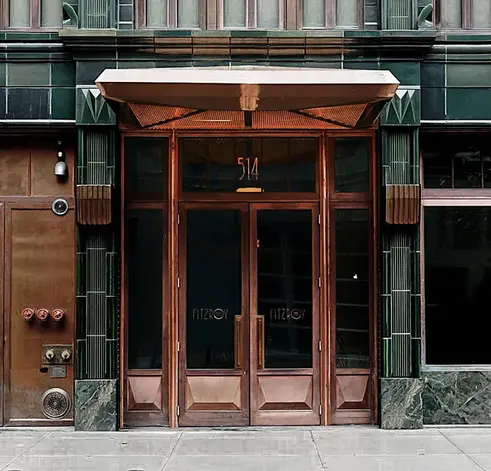 Images of The Fitzroy via Christie's
Images of The Fitzroy via Christie's
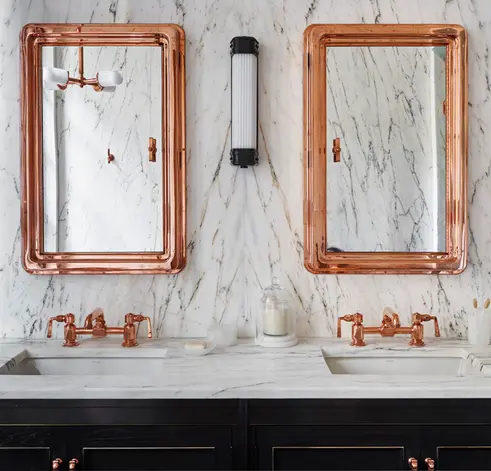
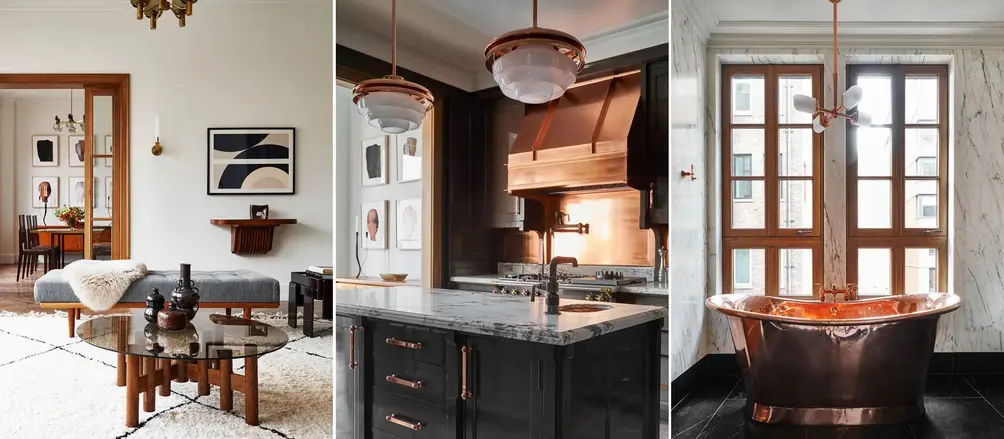 The Fitzroy via Christie's
The Fitzroy via Christie's
From the listing: The beautifully appointed kitchen features a copper backsplash, Waterworks R.W. Atlas fixtures, and Fiore de Pesco marble countertops. The master suite features two walk-in closets and an en-suite master bath with copper soaking tub, steam shower, Waterworks R.W.
Atlas copper fixtures including handheld shower with thermostatic controls, and full slab marble floors and walls. See floor plan and full details here.
Social Distancing
A final and obvious way in which high-rise dwellers face increased risks concerns social distancing. We’ve now all been told to stay at least six feet away from people outside our own home, but as any New Yorker knows, few elevators permit for such distancing measures. Likewise, if you live in a high-rise building, whenever you come and go from your unit, the likelihood of brushing past one or more individuals is exceptionally high. While social distancing is a great idea and may work for people who live in single-family homes, for many urbanites, social distancing guidelines are extremely difficult to put into practice.
Would you like to tour any of these properties?
Just complete the info below.
Or call us at (212) 755-5544
Pandemic Proof Buildings
This raises a rather obvious question and one that designers around the world are likely already contemplating: Could we design pandemic proof buildings?
While we may not be able to prevent future pandemics through design, there are many things designers can already do to mitigate the spread of viruses in buildings, promote social distancing, and even detect viruses. As Luke Leung, director of sustainable engineering at Skidmore, Owings & Merrill, told
Fast Company, “Buildings have to be the secret weapon in the future to combat infectious diseases.”
At least a few fixes are simple—for example, ensuring a building’s plumbing is up to code, improving air quality by installing higher-quality filters, and adjusting humidity levels. It could also be possible to reduce the number of high-touch surfaces in buildings by installing voice- or motion-activated interfaces on elevators and in other high-touch areas. Low-tech solutions, such as installing handwashing stations outside all elevators and other high-touch areas, could also help reduce the spread of viruses. In China, some buildings have already been rewired for detection purposes. Many buildings take people’s temperatures as they enter using either an infrared thermometer or thermal imaging.
Some measures, especially those focused on detection, may receive pushback in the United States where people seem unlikely to consent to having their health status monitored as they go in and out of buildings. However, in a post-COVID-19 era, public attitudes on health and building design both seem bound to undergo a radical change.
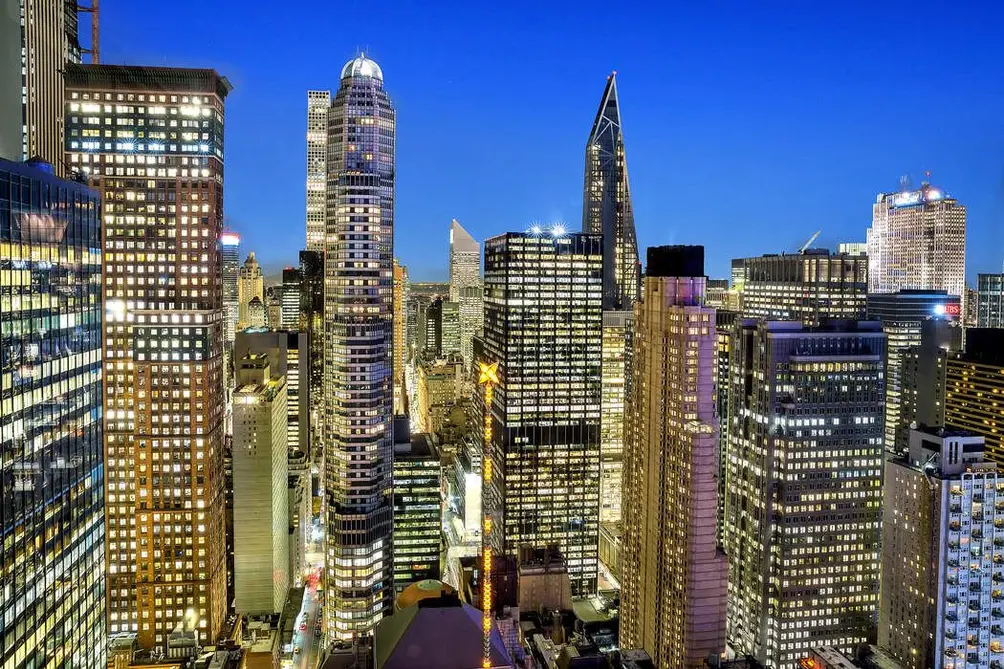 Credit: Sotheby's International Real Estate
Credit: Sotheby's International Real Estate
Listings with Superior Filtered Air
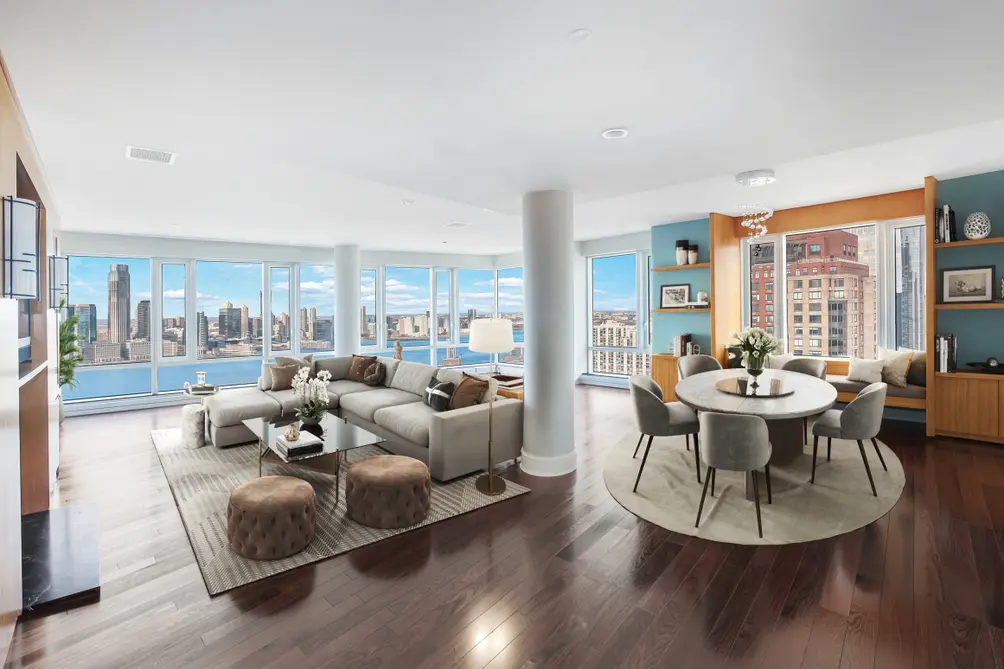 The Visionaire via Compass
The Visionaire via Compass
From the listing: With glorious floor-to-ceiling windows on three exposures, this impeccable high-floor haven is bathed in natural light and iconic views of the breathtaking Financial District skyline, the Hudson River, and New York Harbor. A large laundry room, two more walk-in closets, motorized window shade prewiring, and digital thermostat and air filtration add comfort and effortless ease to this spectacular home in the sky. See floor plan and full details here.
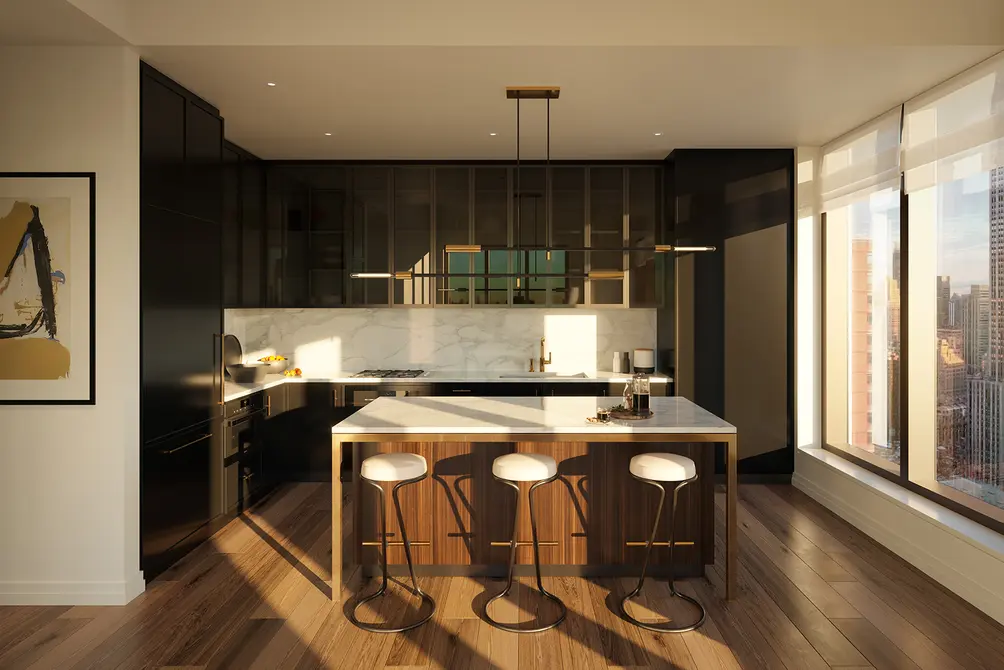 Rose Hill via Core Realty Group
Rose Hill via Core Realty Group
From the listing: Interiors boast rusticated hardwood floors, bronze finished hardware, soaring ceilings up to 11 feet high, and openable windows with heights of 9 feet. Private virtual appointments are available for this unit. See floor plan and full details here.
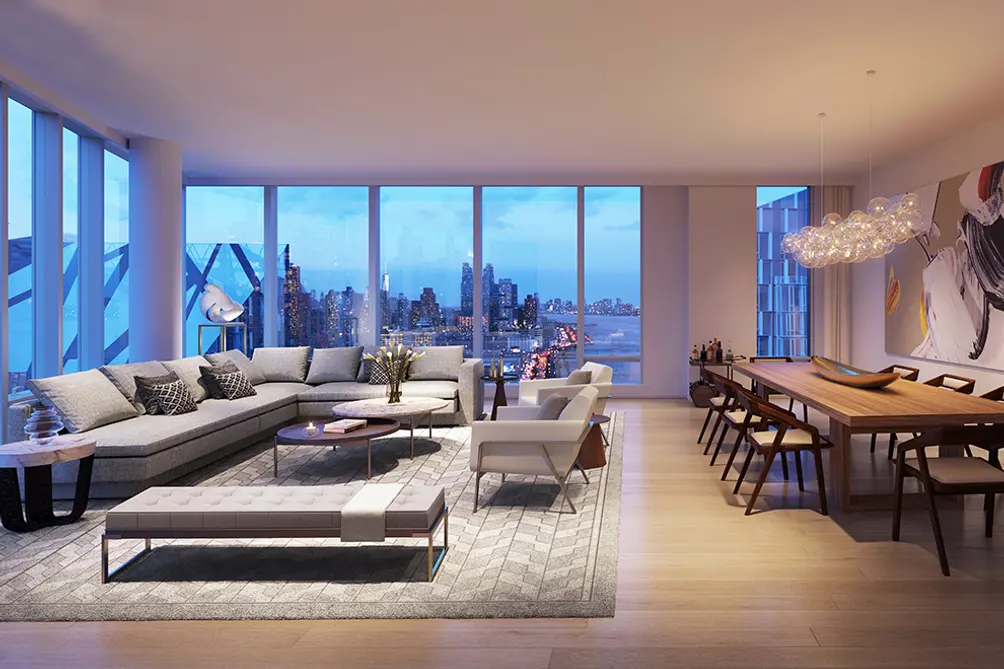 Waterline Square via GID Development Group
Waterline Square via GID Development Group
From the listing: Two-bedroom, two-bath residence enjoys eastern city views through floor-to-ceiling windows, and is well situated in a comprehensive new community with state-of-the-art MERV-13 and MERV-14 multi-filter systems that filter fresh air into each home and public spaces. Virtual showings are available for this unit. See floor plan and full details here.
From the listing: This newly renovated penthouse loft blends luxurious, custom finishes with incredible, original details. Central air runs throughout the apartment with a Pure Air high-efficiency particulate air filtration system. See floor plan and full details here.
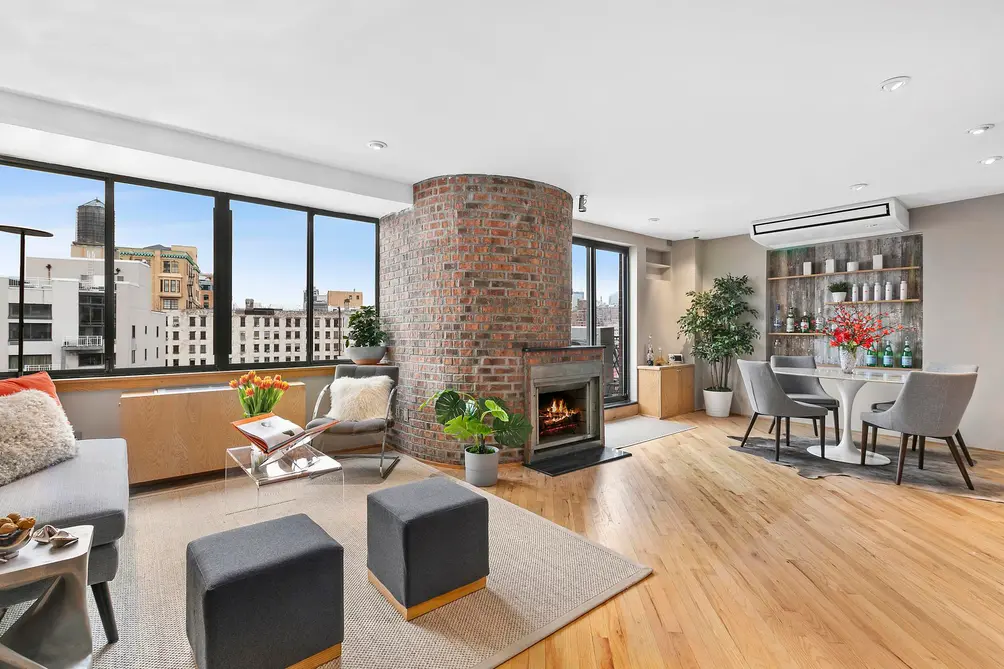 366 West 11th Street via The Corcoran Group
366 West 11th Street via The Corcoran Group
From the listing: This condo features several enhancements to environmental safety/control: advanced water filtration and built-in HEPA air filtration systems for your own hypoallergenic sanctuary. In addition to these upgrades, the penthouse level offers a safe distance from the street for enjoying the private balcony perfect for enjoying the sunset and absolutely stunning views of the Hudson, the neighborhood and the city beyond. Video and virtual tours are available for this unit. See floor plan and full details here.
 The Visionaire via Warburg Realty
The Visionaire via Warburg Realty
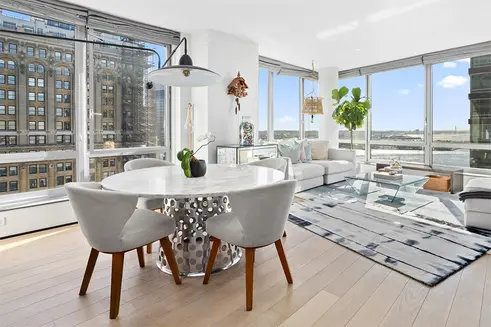 Millennium Tower Residences via Douglas Elliman
Millennium Tower Residences via Douglas Elliman
Would you like to tour any of these properties?
Just complete the info below.
Or call us at (212) 755-5544
Would you like to tour any of these properties?

Contributing Writer
Cait Etherington
Cait Etherington has over twenty years of experience working as a journalist and communications consultant. Her articles and reviews have been published in newspapers and magazines across the United States and internationally. An experienced financial writer, Cait is committed to exposing the human side of stories about contemporary business, banking and workplace relations. She also enjoys writing about trends, lifestyles and real estate in New York City where she lives with her family in a cozy apartment on the twentieth floor of a Manhattan high rise.

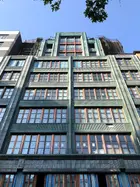
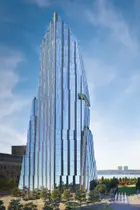
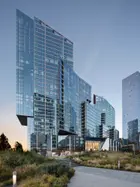
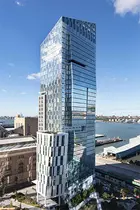
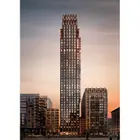
 6sqft delivers the latest on real estate, architecture, and design, straight from New York City.
6sqft delivers the latest on real estate, architecture, and design, straight from New York City.
